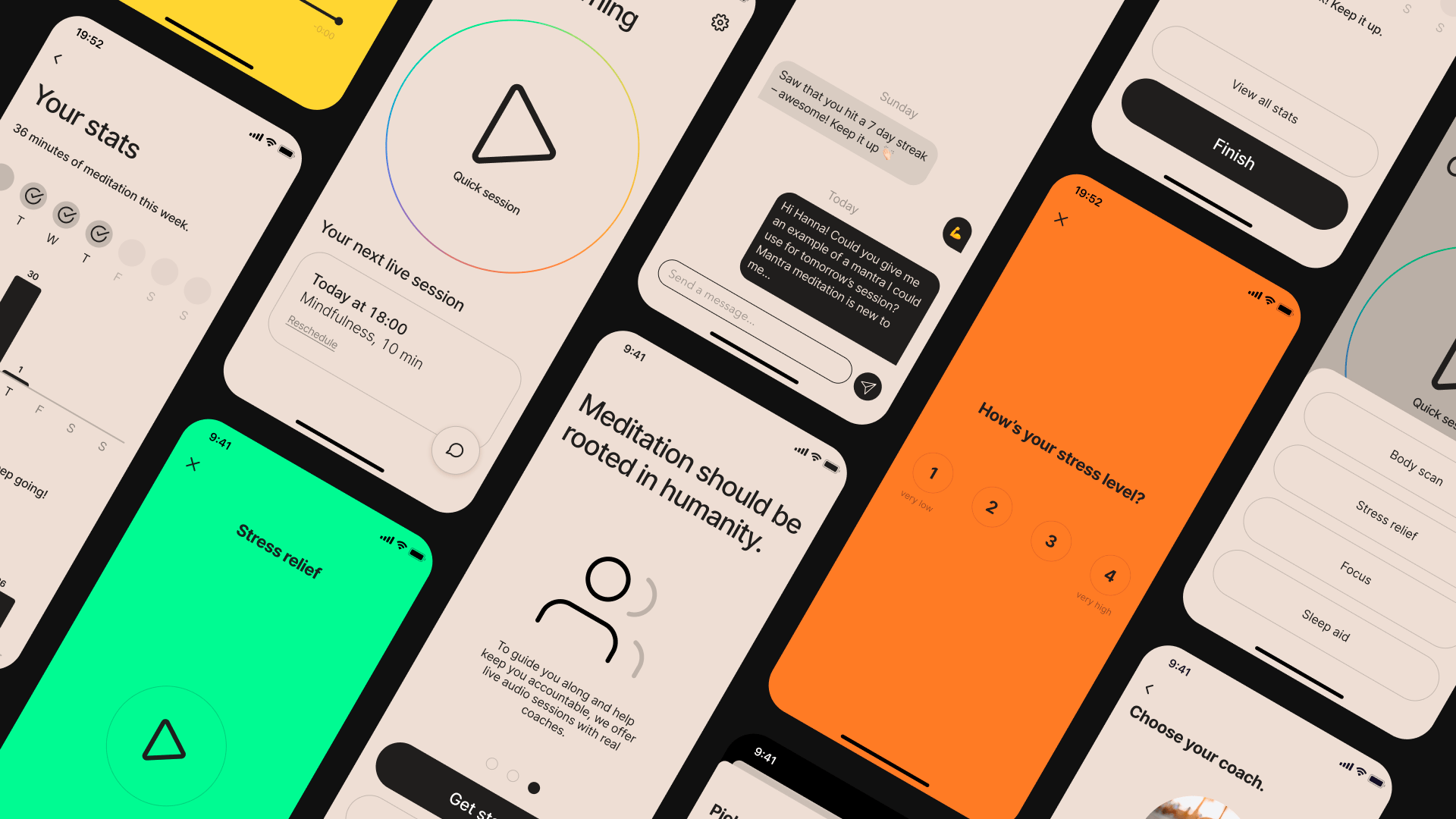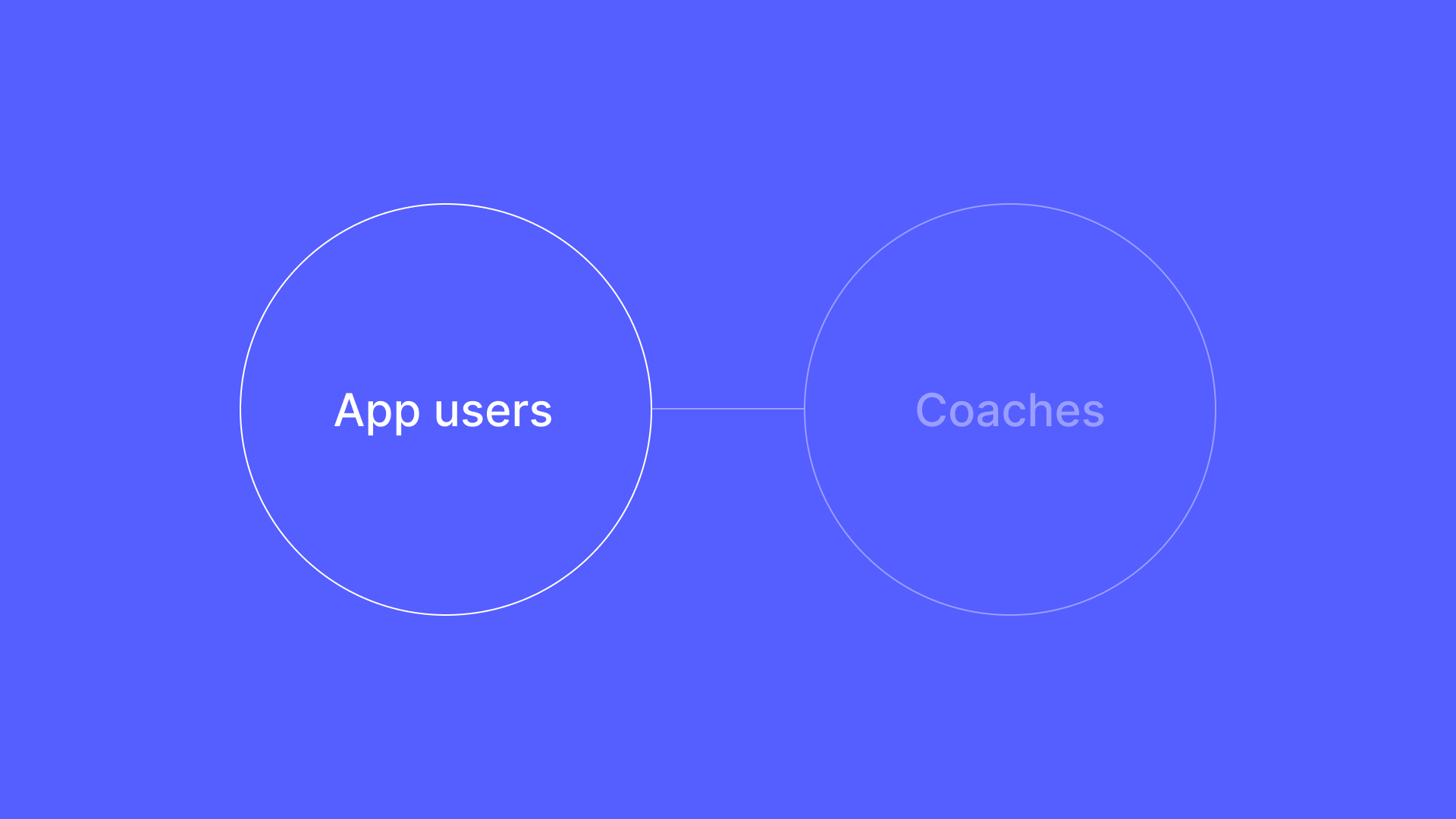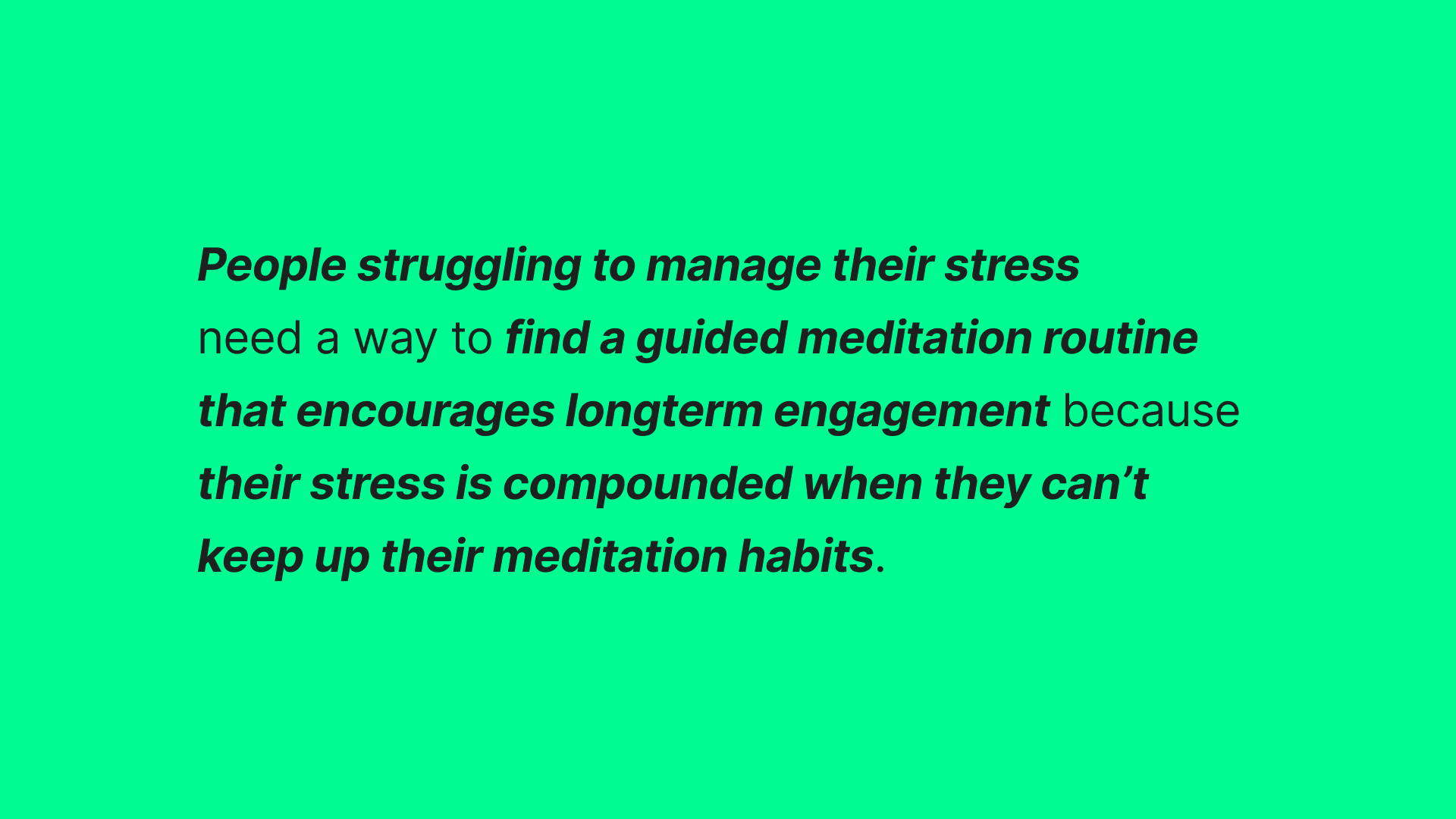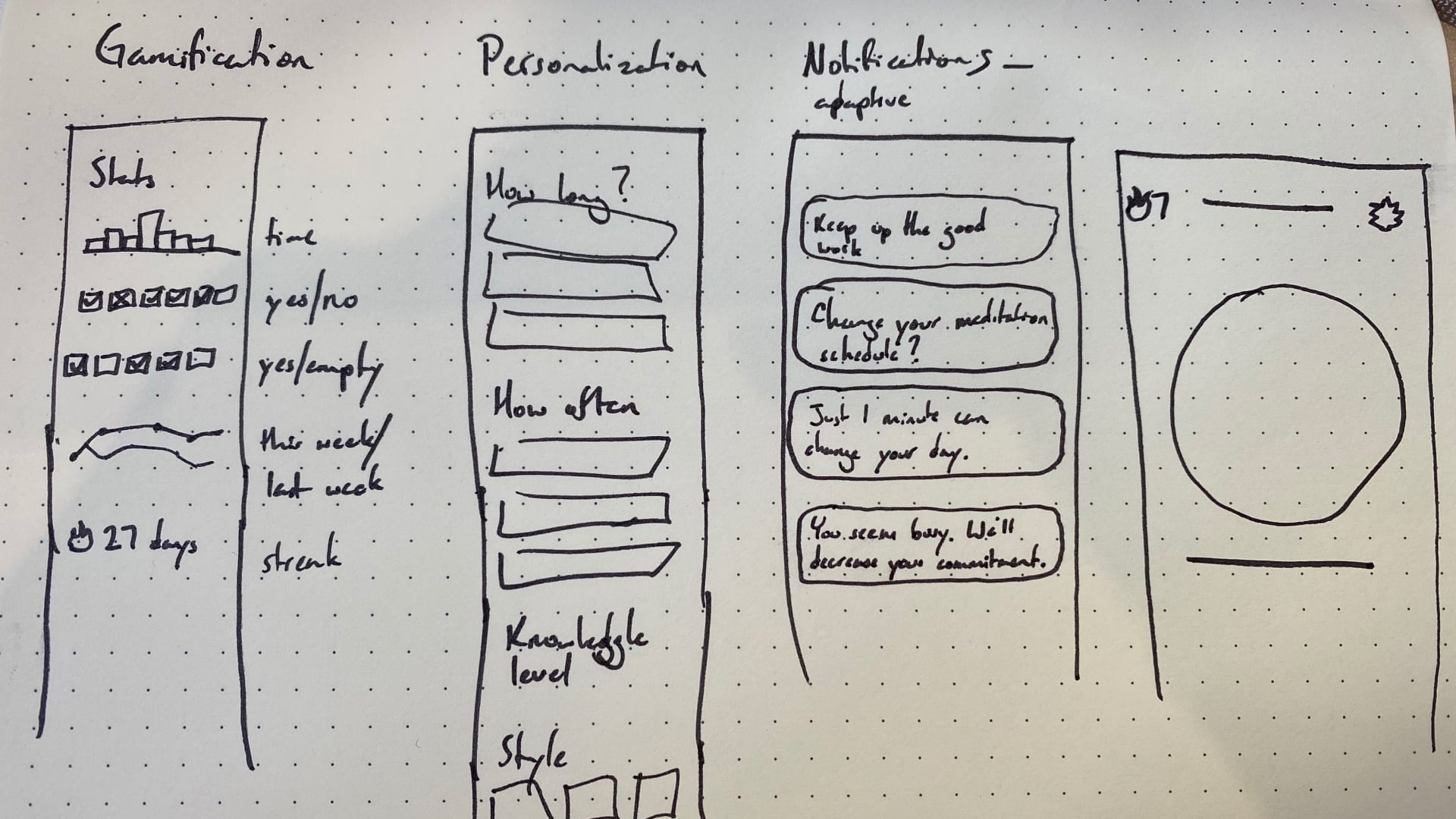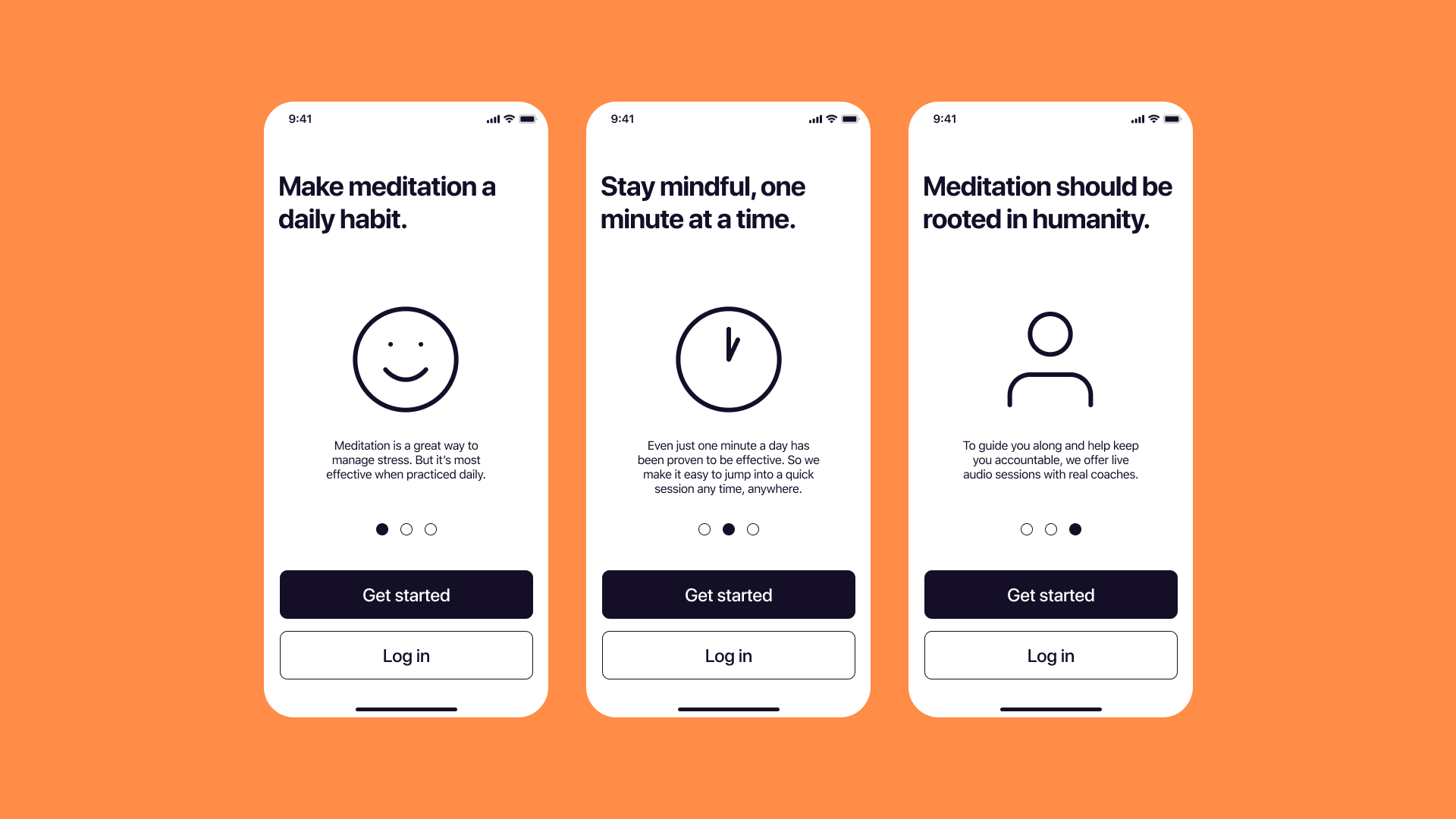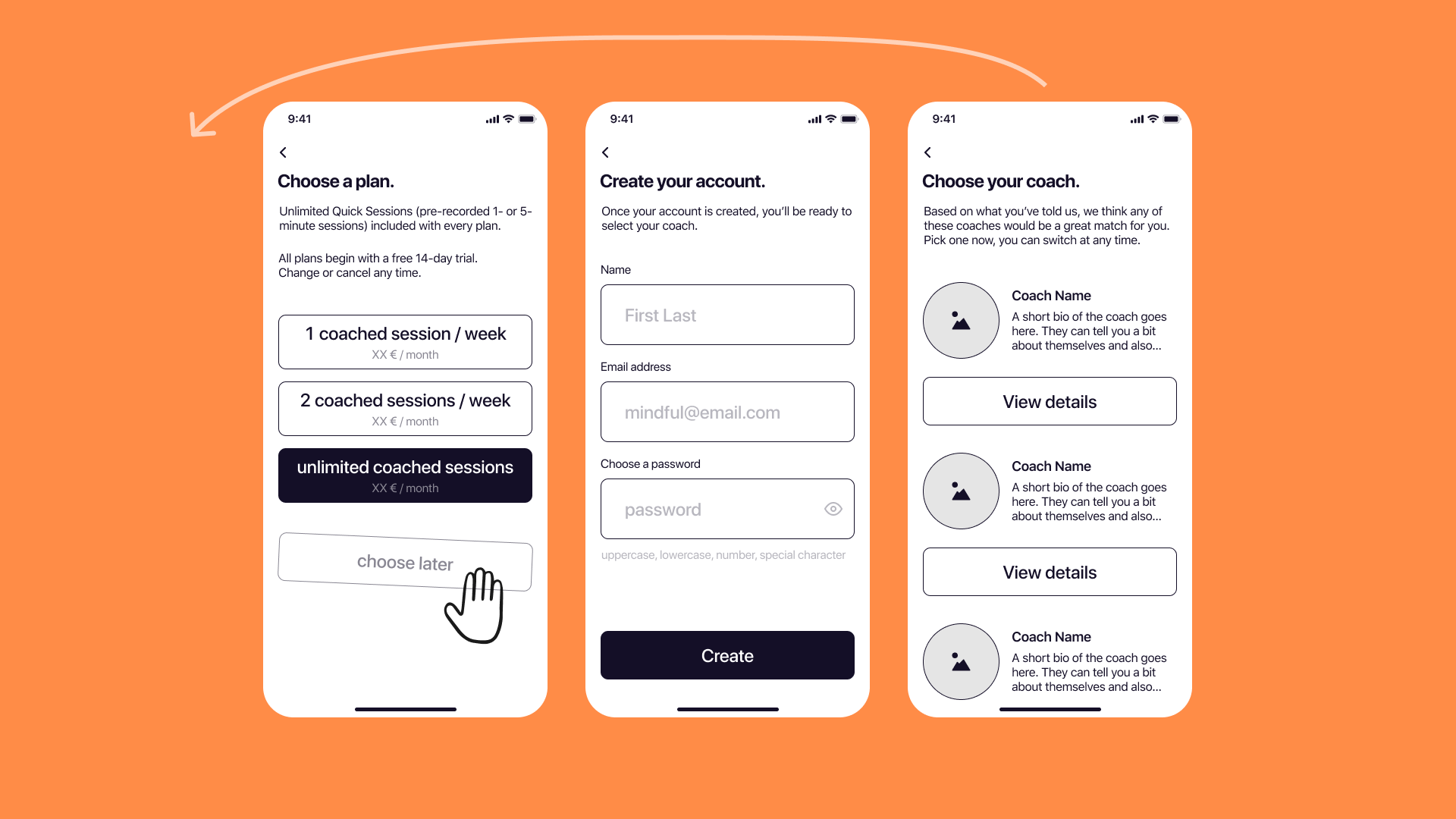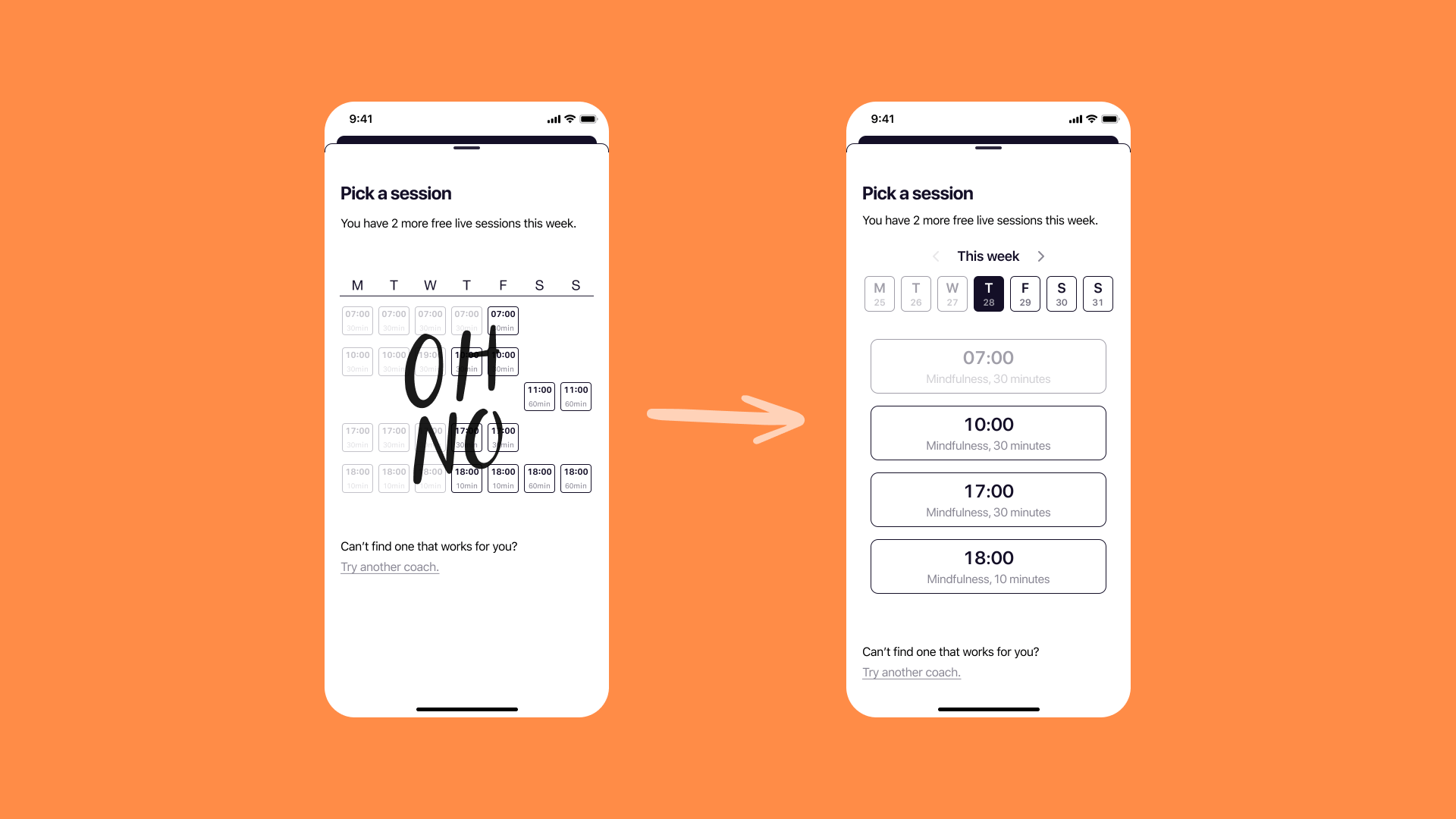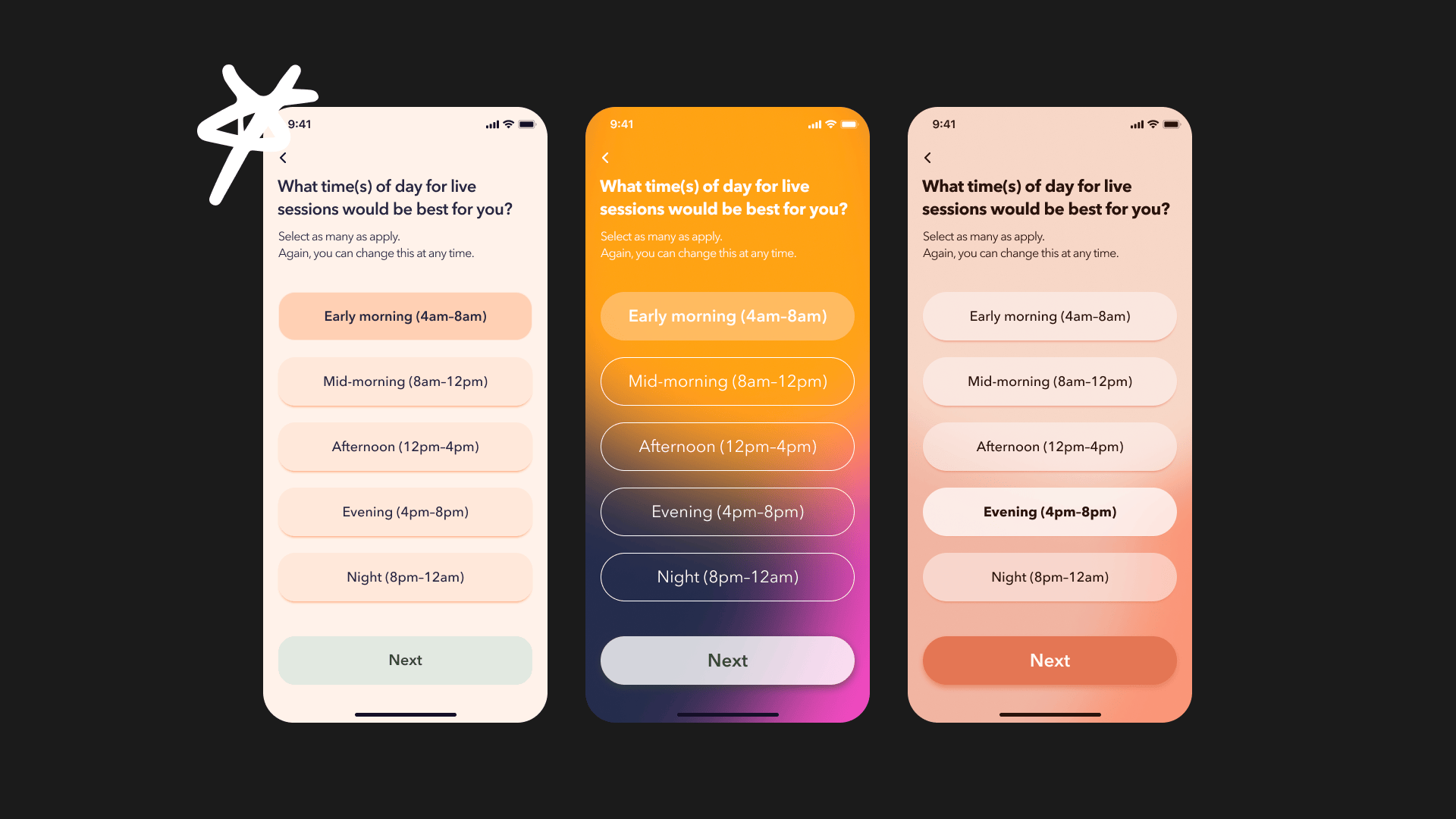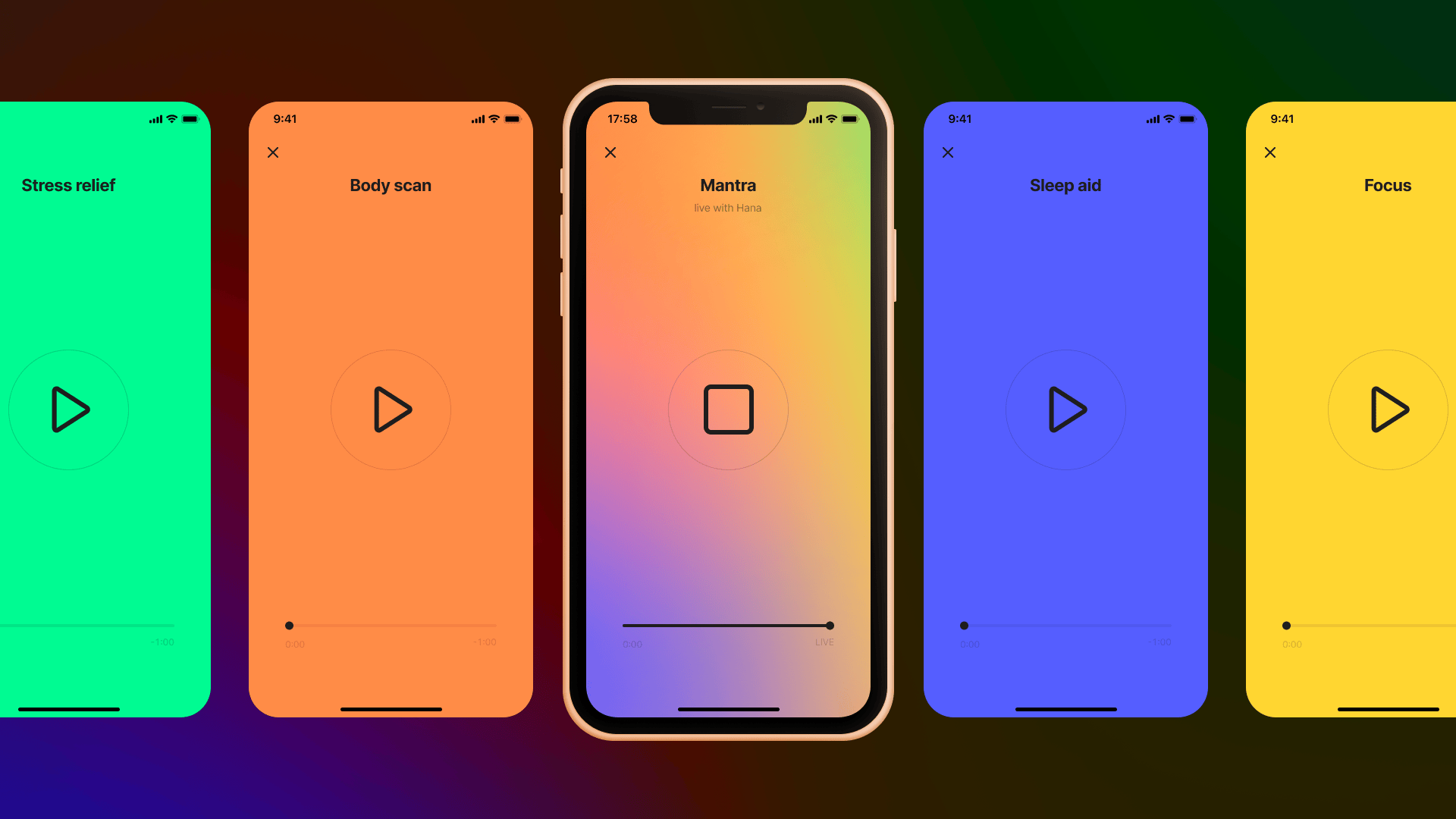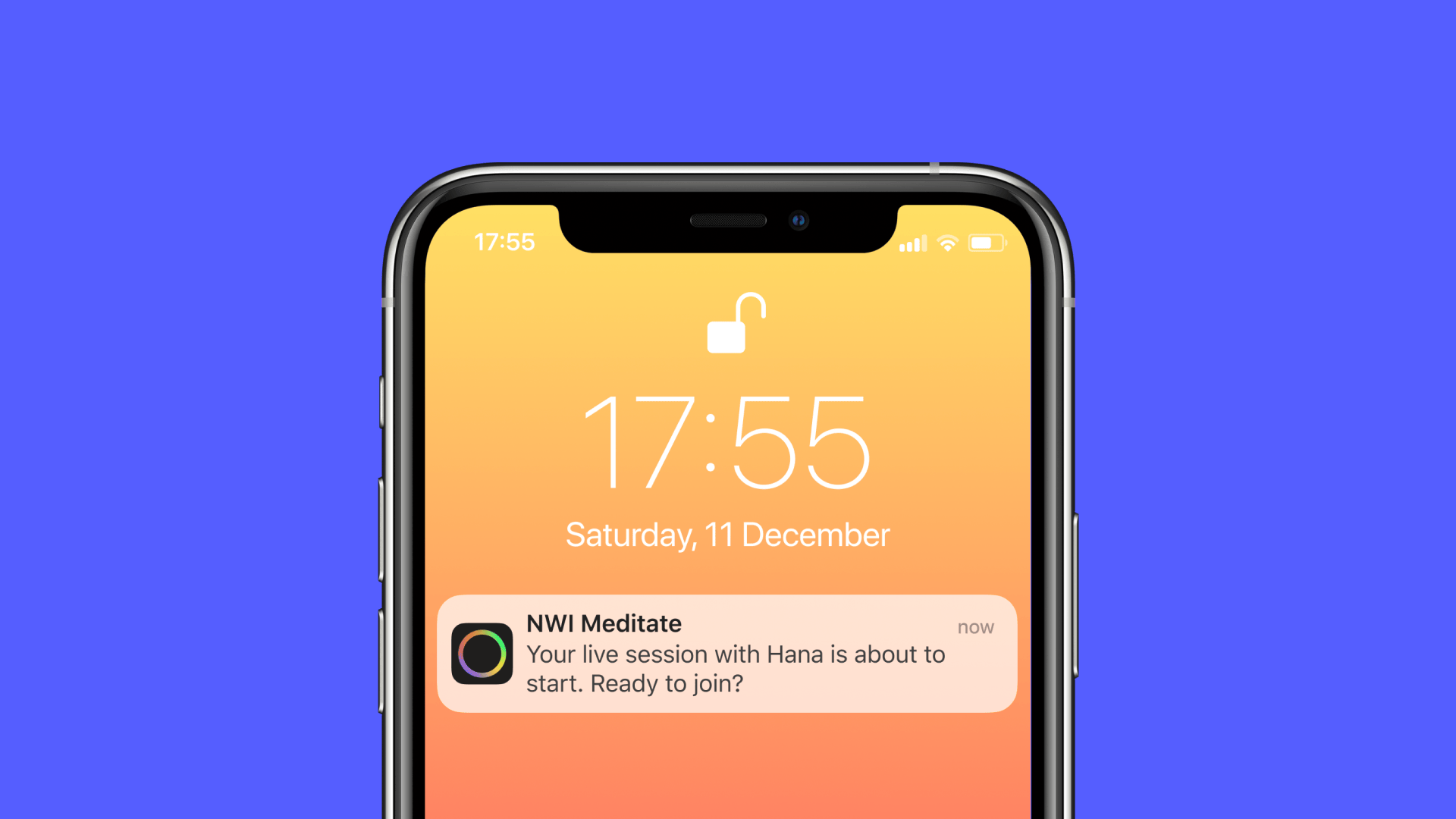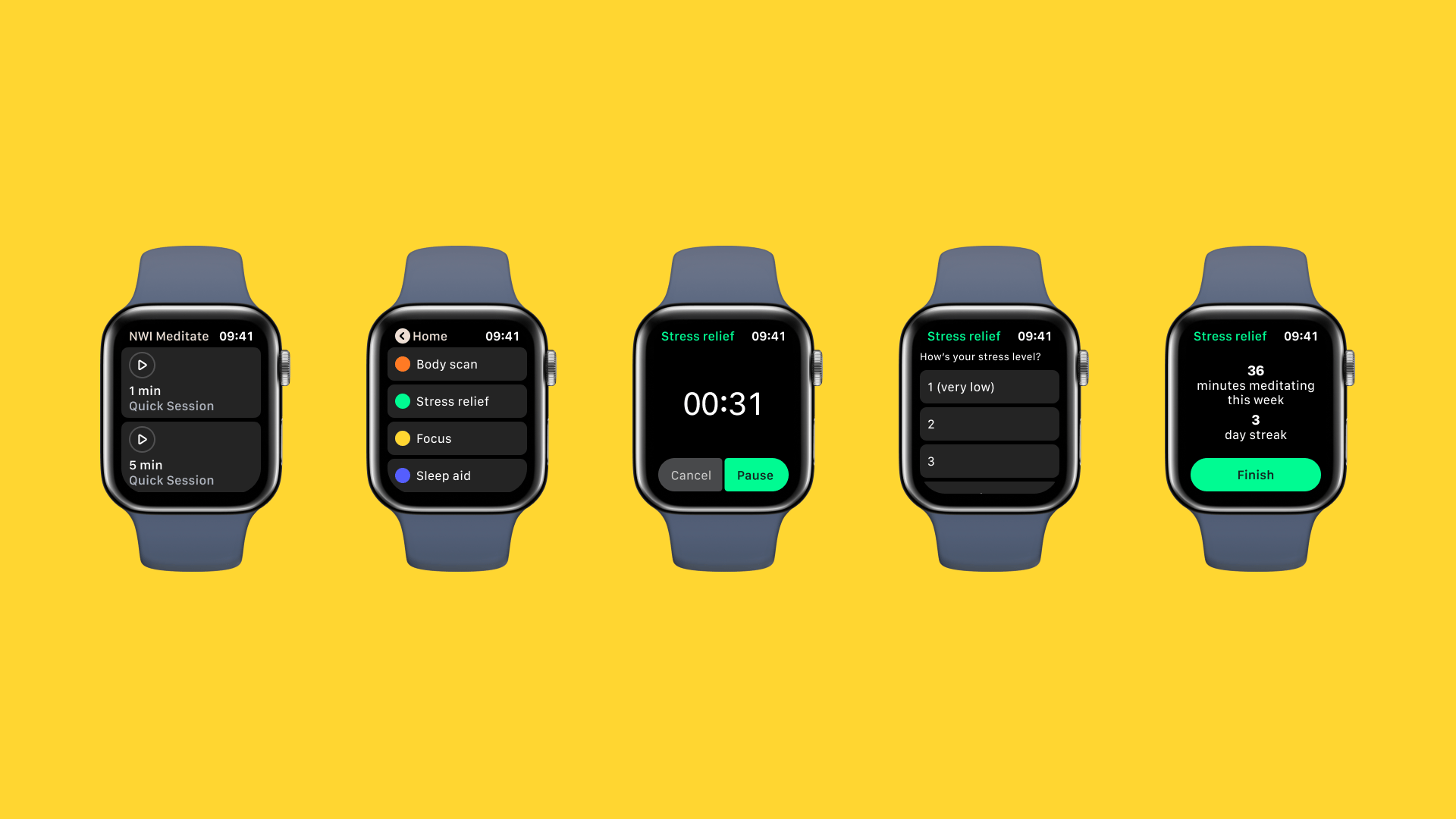Meditation App MVP
Creating a set of digital wellness tools for National Wellness Institute coaches and updating NWI’s image to reflect their innovative and fresh new approach.
The problem #
As part of my training for Ironhack, I was tasked with building a minimum viable product (MVP) for a “client,” the National Wellness Institute. NWI offers certification and training for wellness professionals, as well as tools and frameworks they can use to help their clients achieve wellness goals. The institute has numerous years of experience but has been slow to catch up with quickly evolving technology.
I’d be creating a prototype for a new app that would allow coaches to connect with their clients, focusing on one specific aspect of wellness. The prototype needed to consist of:
- the user flow for the main feature of the app,
- a way for users to set up a profile with information relevant to their goals,
- a way for users to set goals and track their progress,
- the ability for users to share stats with their coaches (or vice versa).
The app should be native to one platform, iOS or Android. I was also expected to provide at least one screen for any responsive device to demonstrate the ability for the app to further adapt to user desires and needs. I did not need to follow any existing NWI visual guidelines, but should instead create a new style guide for the app.
The solution #
I noticed that NWI is largely focused on wellness professionals. The brief, though, included both these coaches and their clients.
With my timeline of only 5 days, it would be nigh impossible to build a solution that met the needs of both groups. So for my initial scope within this first sprint, the clients — users of the app — would be my primary target. Building out the companion solution tailored to the coaches would be top of my list of next steps.
Research #
I chose meditation and stress relief as the wellness aspect I’d focus on. Research showed that since 2012, the number of people practicing meditation globally has tripled, with meditation now roughly as popular as yoga in the US. It’s a fast-growing industry and practice, and, especially after the events of 2020, stress relief is at the top of many people’s minds.
Subject-matter research gave me some insights into the practice of meditation itself:
- Meditation is most effective when practiced regularly, with daily practice the #1 way to turn it into a habit.
- Even one minute of meditation a day has been proven to be effective.
- When trying to form a new habit, we must fight autopilot — dismissed reminders must be refreshed regularly, or the habit instead becomes to ignore them.
To get a better sense of the app’s potential user base, I asked questions both with an online survey and six in-depth interviews of people practicing or interested in meditation.
“I truly believe in the positive effects of meditation, because I’ve felt them.”
“It’s so hard to turn into a habit, especially when I’m stressed — which sucks, because that’s when I need it the most.”
“It can be difficult to know if I’m meditating the right way.”
With these responses combined with my subject-matter research, I was able to craft a problem statement that would guide my design decisions.
Ideation #
Brainstorming sessions led to me to focus on personalization, gamification, and notifications. After sketching some initial ideas, I realized I needed to drill down even further into the coach–client relationship.
I used my next round of low-fi sketches to run some concept tests. Testers were excited about the idea, so I decided to move forward with it.
Live fitness classes with a personal trainer, but for meditation
Classes with actual trainers are extremely popular and successful in the fitness space — accountability keeps trainees motivated, and guidance helps them feel more comfortable. Applying this model to meditation can address issues with motivation and uncertainty found in research.
In addition to live training, users could start “quick sessions” any time — pre-recorded 1- or 5-minute guided meditation sessions. Removing as much friction as possible is key to helping form new habits.
With my concept validated, I crafted a mid-fidelity user flow for the onboarding process and the main screens of the app.
Iteration #
After running usability tests on the mid-fi prototype, I adopted some key iterations. My initial flow asked the user to pick a payment plan and create an account before being able to view coaches and select one. Testers were hesitant to continue onboarding at this point, feeling they were being asked too much before seeing the real value of the app.
So I made plan selection and account creation the very last steps of the onboarding process, after they were able to select a coach that worked for them. I also added the option to defer selecting a plan and begin a trial without commitment, which increased testers’ confidence in the app’s utility.
I also vastly simplified the session scheduler page after testers struggled to use it. A bit of information density was sacrificed to make the info more understandable and consistent with existing UI patterns.
With these changes, along with a few others and alignment fixes, I was ready to move on to the high-fidelity prototype that would be my final deliverable. But first, to get there, I would need to define the visual style of the app.
Delivery & post-sprint evolution #
Insight from my research led me to pursue a style that was:
- clean,
- soft,
- and inspiring.
After much exploration, I chose 3 different styles that I used to mock up a few screens for desirability tests. The first option was the most well-received, but the reception was pretty mixed. However, at this point I was nearing the end of my super tight timeline. I decided to move forward for the sake of meeting the deadline, with a plan to explore the style further post-sprint.
I delivered a hi-fi prototype that included:
- the onboarding flow,
- the main home page,
- session scheduling pages,
- the flow for launching and completing Quick Sessions,
- a Chat screen for messaging a user’s coach,
- and a Stats page to track progress.
Per the brief, I also delivered a screen for a secondary device. I chose the Apple Watch, which is a perfect fit for a meditation app. Users can pair the Watch with bluetooth headphones to quickly jump into a meditation session without even pulling a phone out of their pocket (and potentially risk becoming distracted by other apps). I would explore the Watch app further after the initial deadline.
Post-sprint refinements
Post-sprint explorations led me to a style with a simplified, ultra-clean palette accented with bright splashes of color where it mattered most — where users could jump into meditation.
Color use is intentional, with each meditation style offered represented by a different hue. Overall styling is kept minimal with a very low visual weight, so as not to distract from the quiet, sensitive nature of meditation. The primary focus of the app should always be to stay out of the way while encouraging positivity and introspection.
This new style was well-received amongst five desirability and usability tests. I made an updated hi-fi prototype with a key addition: live session notifications and play screens, which had been missing from the initial deliverable.
This left me with a pretty full-featured, hi-fidelity prototype consisting of:
- onboarding,
- quick sessions,
- live sessions,
- messaging with coach,
- stats and progress tracking.
Secondary device
As promised, I also furthered my work on the Apple Watch app. I updated my initial screen to match the new visual style, but also built out the full user flow of what I envision as its primary purpose — Quick Sessions.
The Watch app is fully prototyped here.
Next steps & retrospective #
As mentioned at the top, my next steps would begin with building out a companion platform for coaches to upload and manage their lessons and schedules, and to live-record sessions.
Additionally, I need to build out a Settings panel for the client-facing app, giving them the option to modify their plan, switch coaches, and manage their account.
And finally, I’d hope to build out a system of rich notifications. I envision this as allowing the user to schedule reminders to log Quick Sessions — but these would be smart and adaptive to user progress and activity.
This project was a challenging introduction to the sheer amount of work involved in delivering an MVP. It was also an excellent challenge in time-management with such a tight deadline. Mental health and stress management are subjects that are extremely important to me, though, and I really enjoyed the work and would love to push the project even further. ☼
